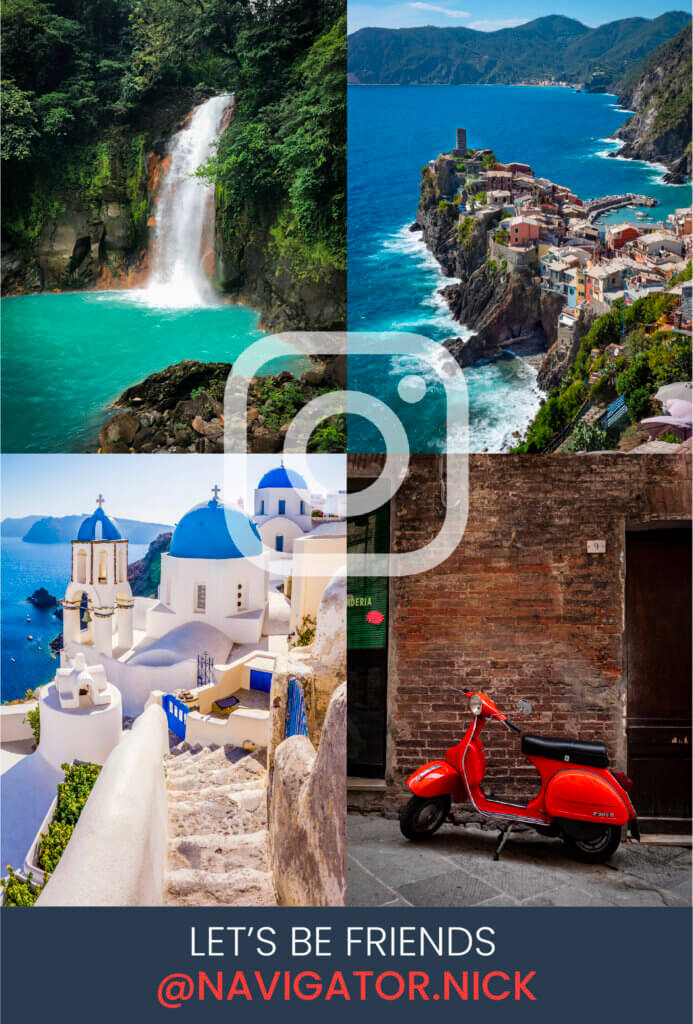Portugal is rich in history, thriving in culture and a melting pot for foodie lovers. The most western part of Europe is beautiful from North to South. If you fancy a fine glass of Port wine, a relaxing beach stay or want to be submersed in history, Portugal should be on your bucket list.
Believe it or not, Lisbon is only a 7 hour flight from the Midwest. I’m not recommending you make a long weekend out of your trip, but it is possible.
However, there is so much to see and so much to do, you will be begging to come back. Have you been to California? Napa Valley? San Diego? Portugal is California on steroids without the political agendas. The wine is better, the views are better, the food is better, the culture is better, the history is better.
So, why go to Portugal?
- Enjoy sky-high miradouros (lookouts) and on-trend roof terrace bars in Lisbon and Porto.
- Beach next to celebrities in the Algarve
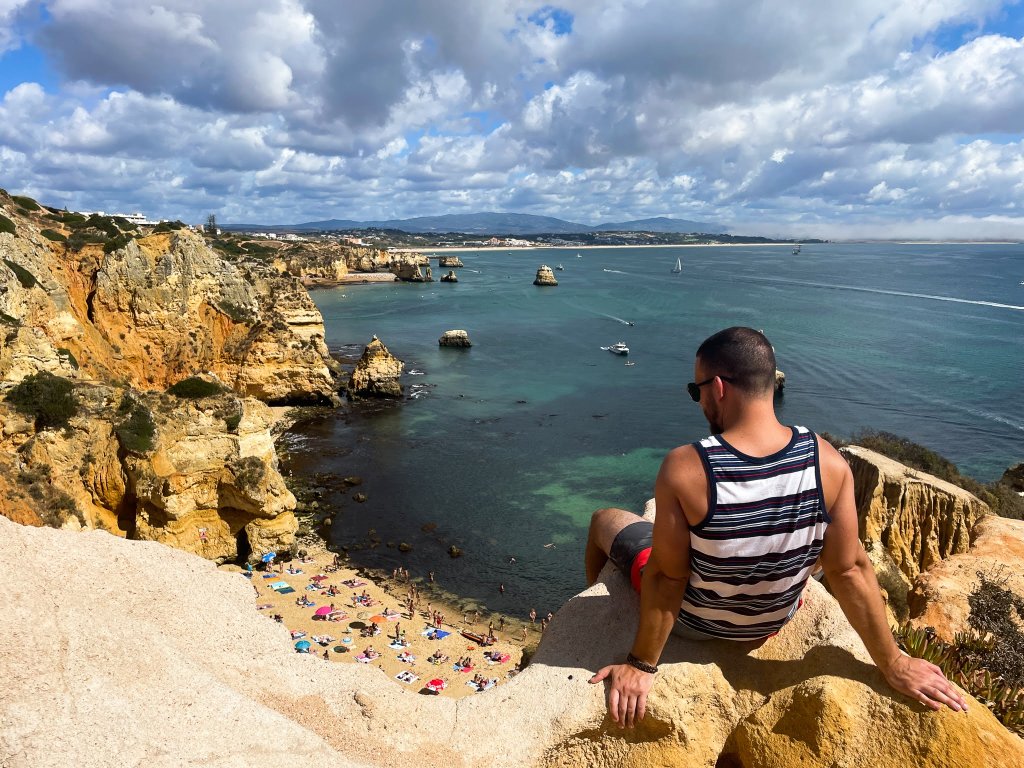
- Costa Nova is renowned for the beauty of its colourful houses and fish market
- Take a personalized wine tour through the Douro Valley
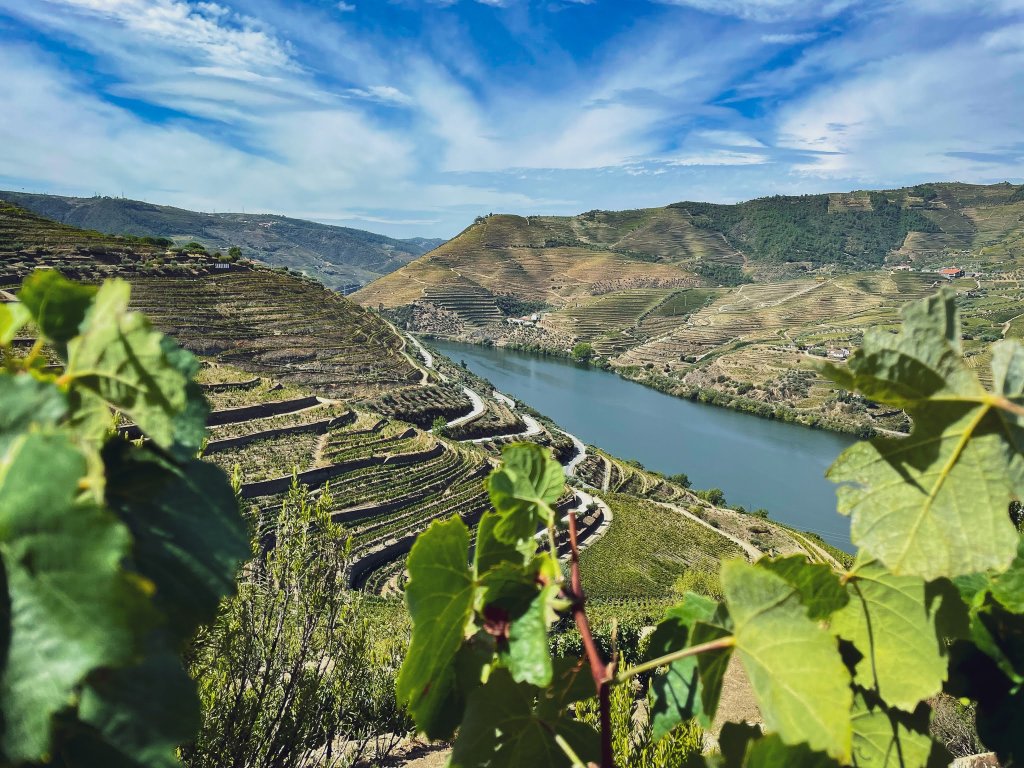
- Enjoy Lisbon’s trademarked seven hills that are spread across the cityscape
- Visit the enchanting city of Sintra, just a day trip from Lisbon
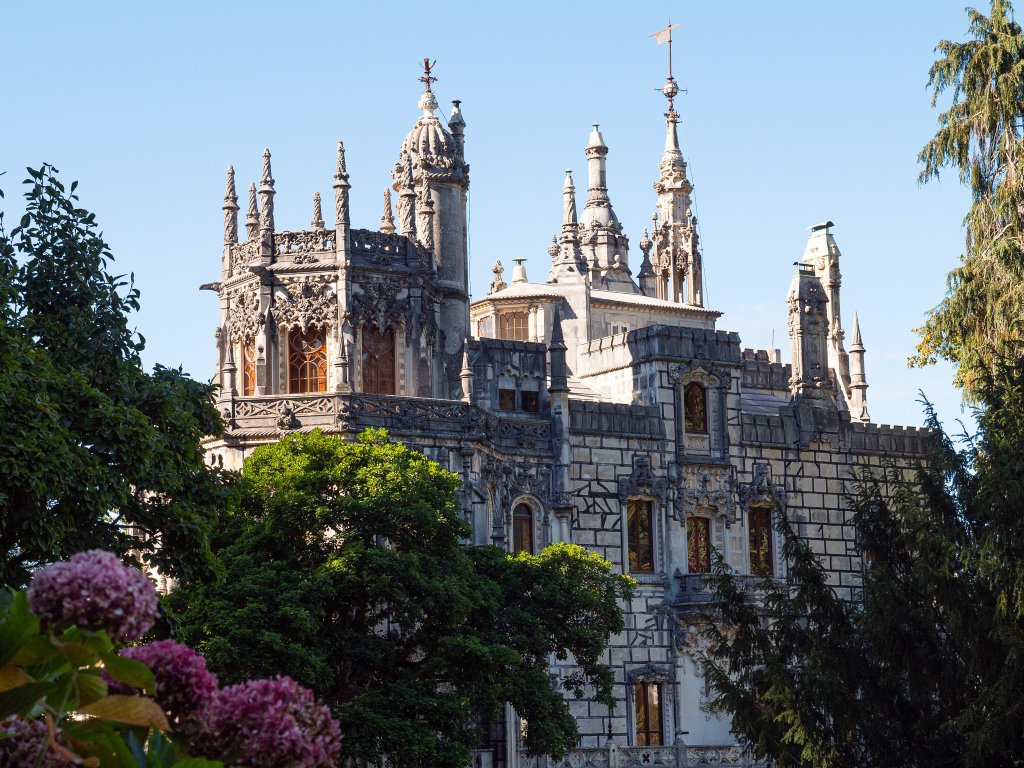
- Braga, the oldest city in Portugal, has over 2000 years of history worth exploring
- Walk along the top deck of Ponte de Dom Luis I in Porto for a unique perspective of the Douro River
- Visit Peniche, the small fishing town and stop at the hidden gem Berlengas Archipelago.
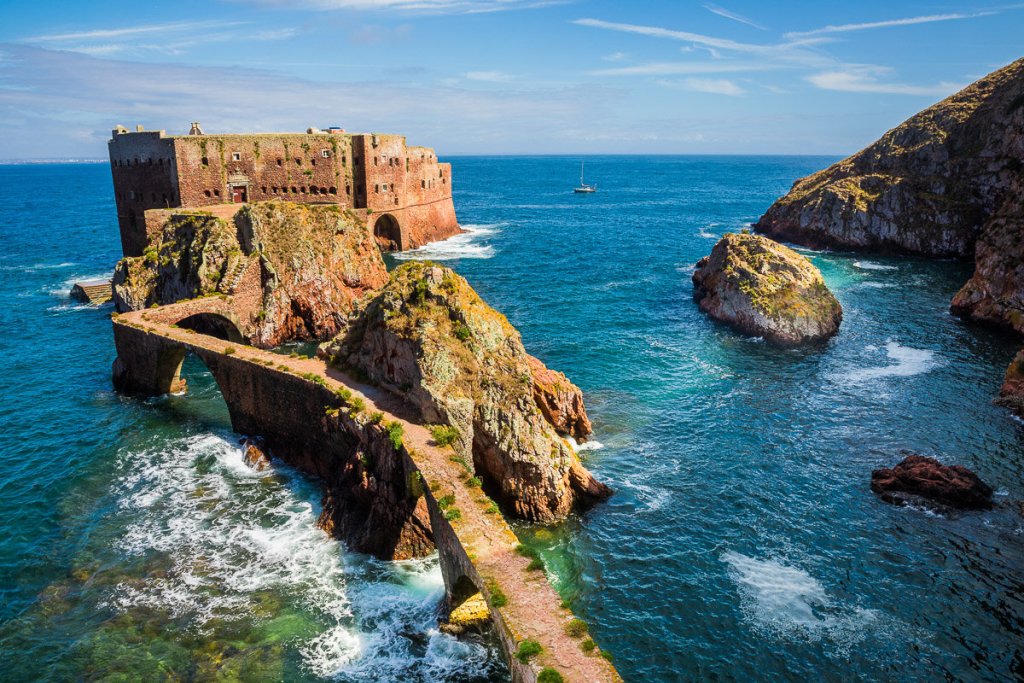
- A must see, the Azores Archipelago
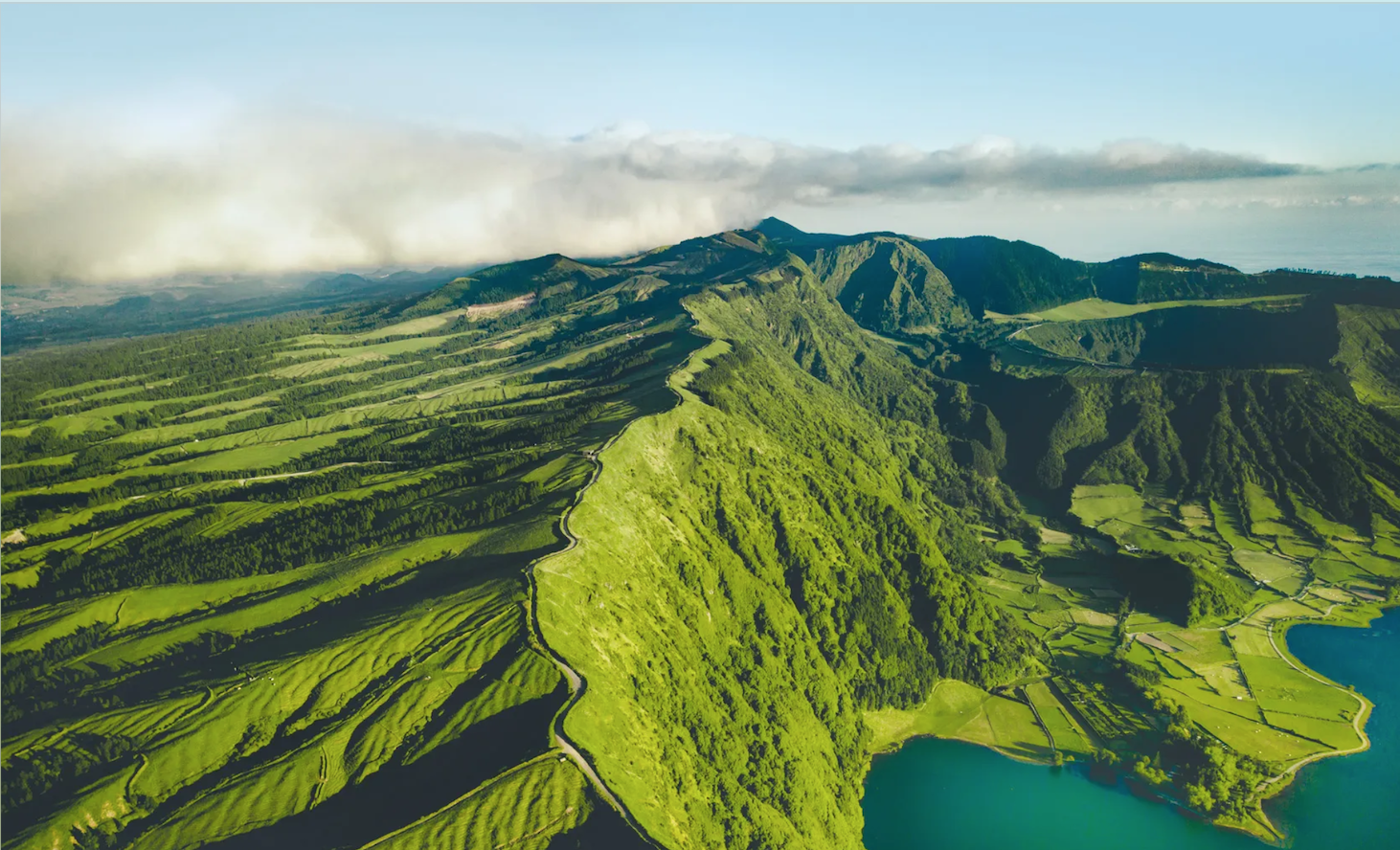
- Walk along the top deck of Ponte de Dom Luis I in Porto for a unique perspective of the Douro River
Europe’s Coolest Country – Young, Fun, Energetic & Vibrant
With a rich, centuries-long history, extraordinary hospitality and an emerging sector of high-end hotels, restaurants and shops, Portugal—whose name seems to be on the tip of everyone’s tongue—is just hitting its stride. Here are ten reasons why Portugal should be on your destination wish-list.
Contact me for assistance in planning a customized journey to Portugal.
1. Climate & Weather
Portugal contains a mix of terrains that offer panoramic vistas and accommodate myriad activities and excursions. Plus, thanks to its location on the southeastern edge of Europe, temperatures rarely drop much below 60º Fahrenheit, and the days are reliably sunny. Lisbon, in fact, has been named one of the top five sunniest cities on the continent. It’s like California, only less smog!
 Sunsets at Praia do Tonel, Sagres, Portugal
Sunsets at Praia do Tonel, Sagres, Portugal2. Portugal is Easy to get Around
Portugal is compact, with no two major cities more than a half-day drive from each other. The Ultimate Portugal Road Trip allows you to stop off and see the less talked about towns. Roman roads, bridges and aqueducts, as well as monasteries, convents, palaces and manor houses, are among the many antique engineering and architectural treasures you’ll stumble upon while navigating the narrow roads. Some of our favorite stops between Lisbon and Porto include the charming villages of Óbidos, Tomar and Coimbra.
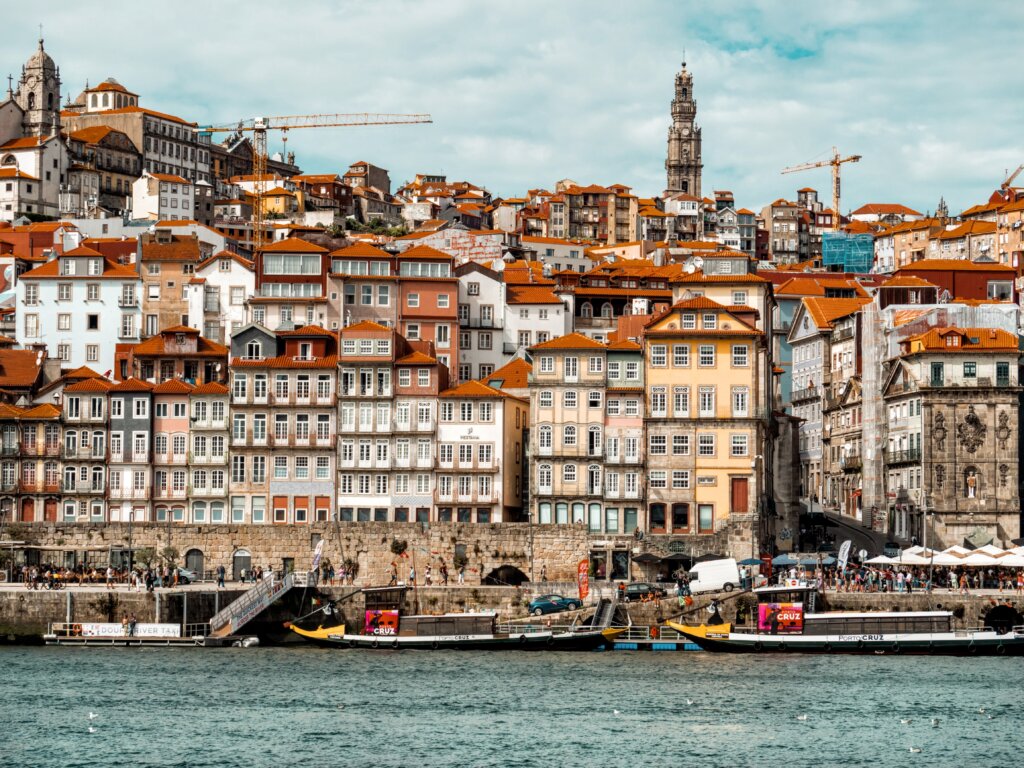 Porto, Portugal.
Porto, Portugal.3. Portugal is Safe to Travel
You don’t have to worry about traveling in Portugal, it is a relatively safe country! Petty crime, such as pickpocketing and bag snatching, occurs. However, major crimes are not an issue anywhere in the country. The threat of violence is very low.
However, always ensure that your personal belongings, including your passport and other travel documents are secure at all times. Pay attention to your surroundings, avoid wearing or carrying expensive watches, jewelry, cameras, etc. and don’t carry large sums of cash. If possible, carry only the documents, cash and belongings you will need for the day; leave all other items in a hotel safe.
Here are some helpful tips:
In Lisbon, exercise caution at all train, bus and underground stations, and particularly on electric trams numbered E28, to Castelo de São Jorge (São Jorge castle); E25, to Prazeres; and E15, to Belém.
In Porto, don’t walk alone after dark, especially along the Douro River Waterfront.
Use secure parking facilities, particularly overnight. Ensure windows are closed and doors are locked at all times. As a precaution, remove or place items in the trunk of your vehicle before arriving and parking at your destination.
Be suspicious of anyone (other than the police) signalling you to stop on roads or highways. Thieves use this tactic to steal valuables, unattended bags and even the vehicle.
If you experience car trouble, stop at a gas station or rest stop. Be aware of your immediate surroundings and keep a careful watch on bystanders, including those who offer to help.
Official assistance and road monitoring vehicles are present on Portuguese highways. They will come to your assistance. When possible, wait for these service providers to arrive or if you are in sight of an SOS phone (which are spread along the highways), use it to call for help.
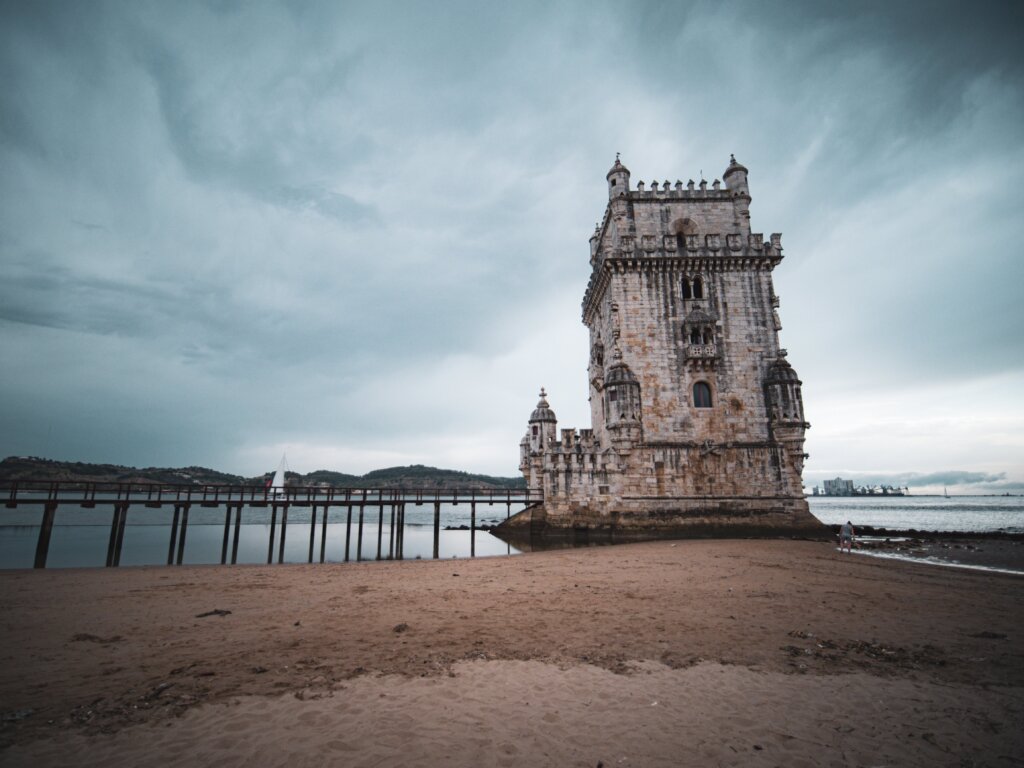 Belem Tower in Lisbon, Portugal
Belem Tower in Lisbon, Portugal4. Portugal has Plenty of Culture
Portugal offers somewhat less luxury than other European countries, but this is more than compensated for by the opportunity to experience a culture that hasn’t been overly tailored to the tourist. Travelers who manage their expectations and are willing to accept sometimes-lackluster hotel amenities will find that the chance to discover a fado bar and listen, along with locals, to a singer performing traditional songs, at once heartbreaking, hopeful and nostalgic, outweighs the lack of high-thread-count sheets. Another bonus of the country’s relatively nascent tourism (though Lisbon is growing increasingly crowded during peak months) is the few signs globalization. For example, in Lisbon, Europe’s second-oldest city (after Athens), you’ll be hard-pressed to find too many McDonald’s or Starbucks outposts.
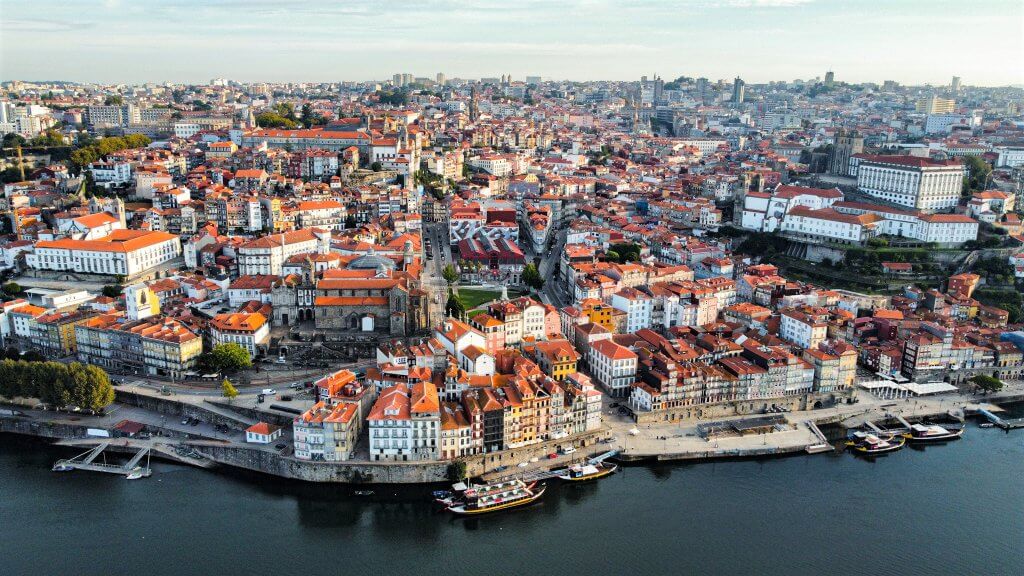 Porto is a coastal city in northwest Portugal known for its stately bridges and port wine production.
Porto is a coastal city in northwest Portugal known for its stately bridges and port wine production. 5. Portugal is Western Europe’s Cheapest Destination
Accommodation. Airbnb or VRBO is the way to go here. You can find great spots in the heart of each city for much less than a Hilton or Marriot. Avoid the major hotel chains.
Try multiple dates. Flights are often cheaper in the shoulder- or off-season. Check prices for different dates with SkyScanner in your travel window. A sale on airfare may help you afford a destination that’s otherwise out of budget.
Avoid holidays, festivals, and other large events, unless that’s the reason you’re going to a specific destination. Crowds can inflate hotel rates, overwhelm popular sights, and make it difficult—and costly—to get around.
Compare midweek to weekend prices. Hotels in big cities tend to be more affordable on the weekends when the business travelers have gone home, while resorts in vacation destinations may be less expensive midweek.
Once you’ve estimated your trip’s flight and accommodation cost, start considering the cost of transportation. Public transportation is considerably cheap and should be used if possible. Renting a car will be more expensive but you will have a lot more freedom.
Miles/Points. The Capital One Venture One card is a fantastic travel rewards credit card to start off with. If you’re a pro, use the Chase Sapphire Preferred card.
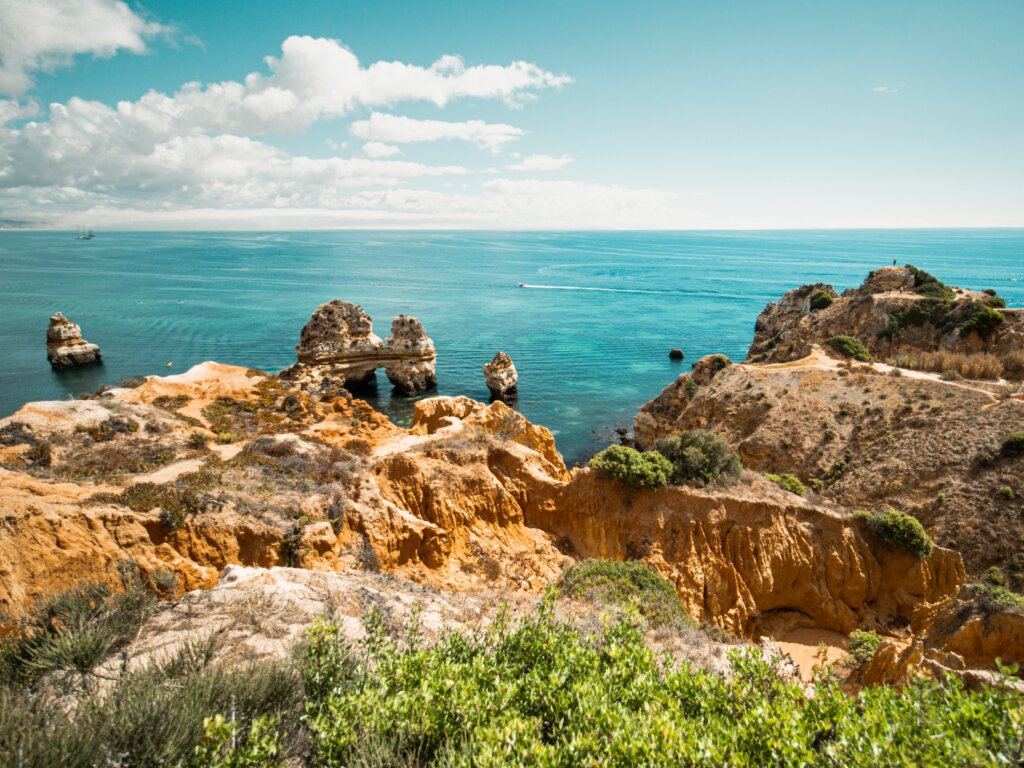 Lagos, Algarve, Portugal.
Lagos, Algarve, Portugal.6. Portugal & The Douro Wine Valley
The Douro River and the Douro Valley are known primarily for Port, a sweet wine that has been produce for two thousand years. The Alto (upper) Douro, also known as the Douro Vinhateiro is dominated by big wineries on the hillsides bearing the names of famous Port producers such as Cockburns, Taylors and Sandeman.
The Douro Alto was made a UNESCO World Heritage Site in 2001, in recognition of the spectacular beauty of both the natural and built landscape and the industrial heritage associated with the Port producing industry. The hills fall steeply to the water’s edge and the region becomes more and more sparsely populated as it travels inland from the coast. Local presunto (smoked hams) and chouriço (spicy sausages) are often on the menu and many of the quintas offer port and wine tasting sessions.
The Douro Valley can be accessed by roads that zig-zag up and down the steep hills, although it is probably easier and certainly more scenic to travel by rail or boat. The Linha do Douro is one of Europe’s great rail journeys, connecting Porto with the towns surrounding the Douro River. The one hundred and seventy five kilometer route joins the river at Mosteiro and runs alongside it for a hundred kilometers before climbing steeply and traveling around unbelievably sharp horse-shoe bends through terraces so steep harvesting them must be nigh-on impossible.
The Douro River was originally fast-flowing and unpredictable but the construction of eight dams in the second half of the last century has rendered it tranquil and lake-like. Before the building of the dams, wine used to be transported downriver in flat-bottomed boats called rabelos. Now it goes on tanker lorries.
The ‘capital’ of the Douro Valley is a town called Peso da Régua, which is dominated by a huge Sandeman’s logo perched on top of a hill. It was here that wines were collected before being transported downriver to Porto. My personal favorite winery is Quinta da Pacheca.
7. Portugal’s Madeira
Lying just a few hundred miles west of Morocco, the Atlantic island of Madeira (famously the birthplace of soccer star Cristiano Ronaldo) is slightly smaller than Cape Cod and home to only 250,000 residents. With its mountainous terrain, rich biodiversity, year-round mild climate and laidback ambience, Madeira draws low-key, active travelers interested in hiking, wine tasting, market tours and other authentic experiences. The island is also known for its elaborate holiday celebrations in December and January, in addition to one of the world’s largest displays of fireworks on New Year’s Eve. Stay at the Belmond Reid’s Palace, where every room has a balcony overlooking the ocean.
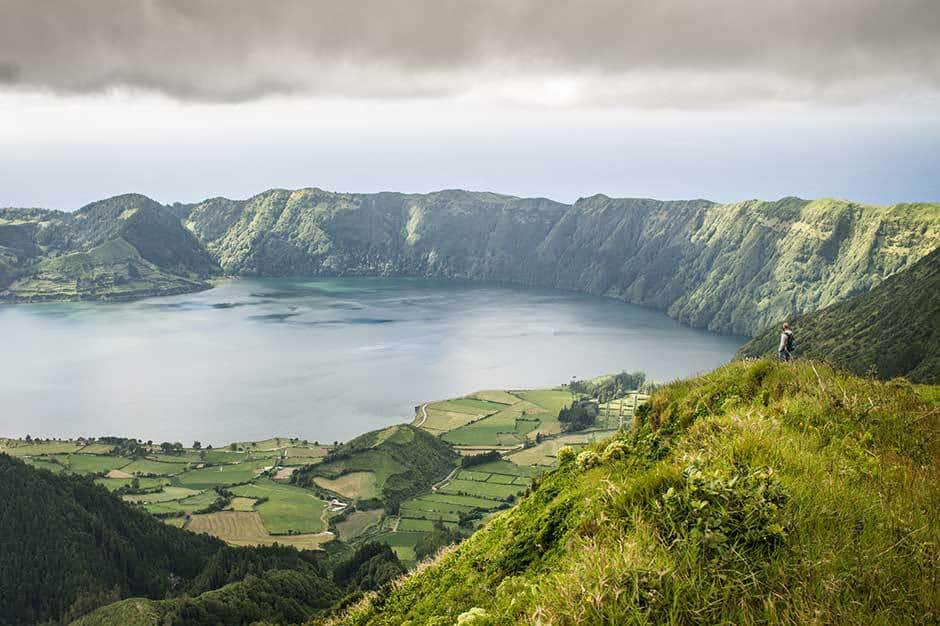 São Miguel Island, the largest island in the Azores.
São Miguel Island, the largest island in the Azores.Thrill-seekers and nature lovers are currently discovering the Azores, a Portuguese archipelago in the middle of the Atlantic Ocean that resembles something akin to the otherworldly landscapes of Avatar. With new direct flights from New York (the journey takes just five hours), the islands beckon with volcanic crater lakes, natural hot springs and black-sand beaches, as well as activities including scuba diving, kayaking, hiking, whale-watching, birding, surfing and more. And while five-star luxury isn’t easy to find here, there are some lovely hotels, such as the contemporary-chic Furnas Boutique Hotel, urban Azor and minimalist White Exclusive Suites & Villas.
7. Sintra
Eighteen miles and a world away from Lisbon, it’s easy to see why Sintra—with its cool, lush hills and proximity to the Atlantic coast—is where Portuguese royals used to spend their summers.
This UNESCO World Heritage site is a popular day-trip destination by transfer or train from Lisbon. After seeing the 19th-century Romantic architecture, cobblestone streets, and dense forests, you’ll understand why Lord Byron once referred to the town as a “glorious Eden.”
Pena Palace is the main attraction in the quaint town of Sintra. Inspired by German Romantic architecture, it looks like a Disneyland castle, with its pink and yellow towers, ornamental buttresses, and cartoonish gargoyles. The interiors are equally dramatic. Don’t miss the intricately carved ceilings and walls of Queen Amelia’s apartments and the striking all-white reception room. If it’s a nice day, purchase a combo ticket that includes access to the royal gardens.
Next to Pena Palace is the Castle of the Moors. Isolated on its lofty perch, one of the peaks in the Sintra Hills, the Moorish Castle is a fortification founded in the 10th century during the period the Moors occupied the Iberian Peninsula.
Its famous walls snake across the hills with their granite blocks interlinking boulders and cliffs. Its parapet walk provides stunningly unique views out over the town, the Palace of Pena and, further in the distance, the greens of these hills contrast with the blues of the Atlantic Ocean
Check out the video below for some Portugal inspiration and make sure to Subscribe!
Check out the video below for some Portugal inspiration and make sure to Subscribe ► http://bit.ly/SubscibeToNN





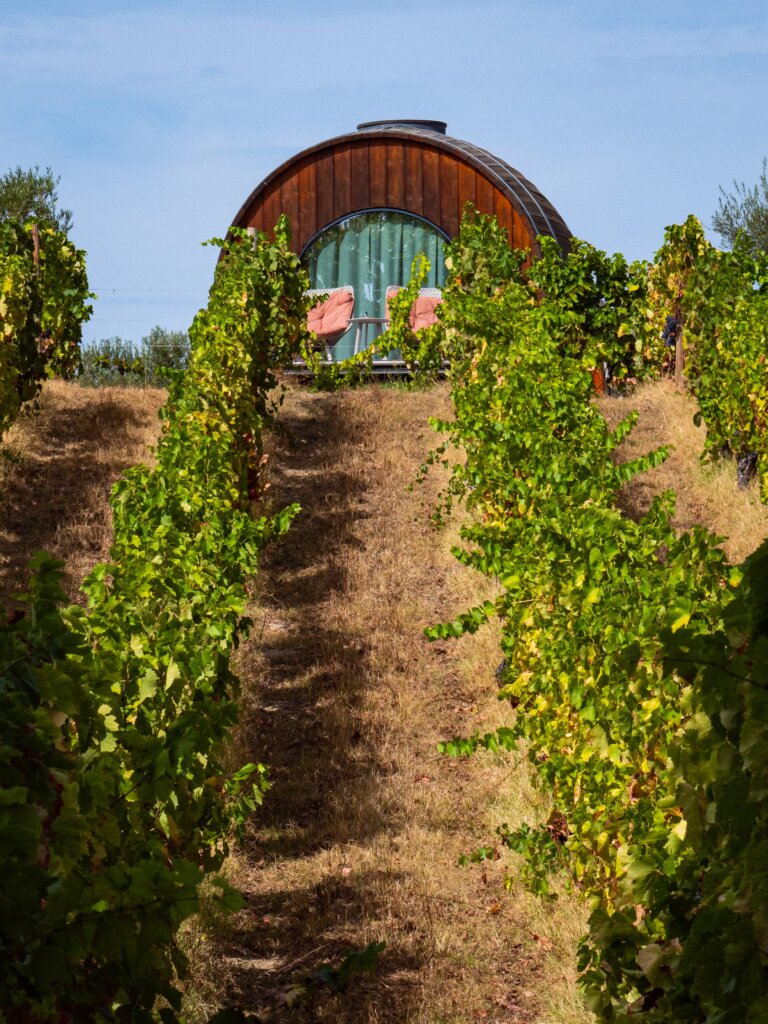

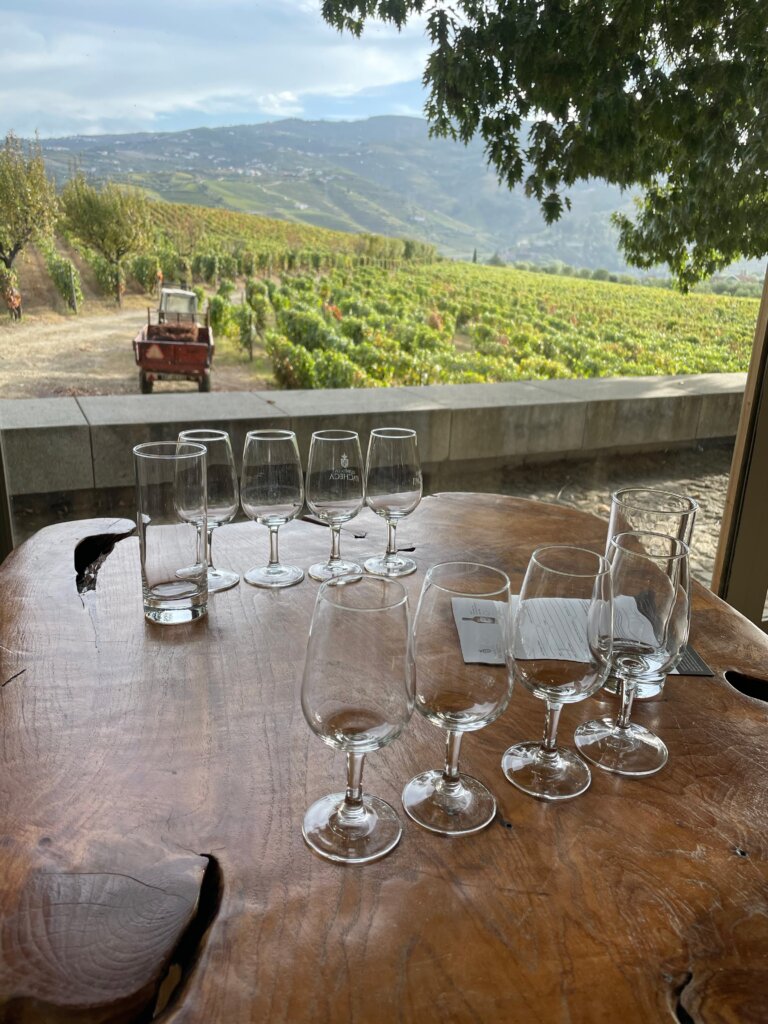
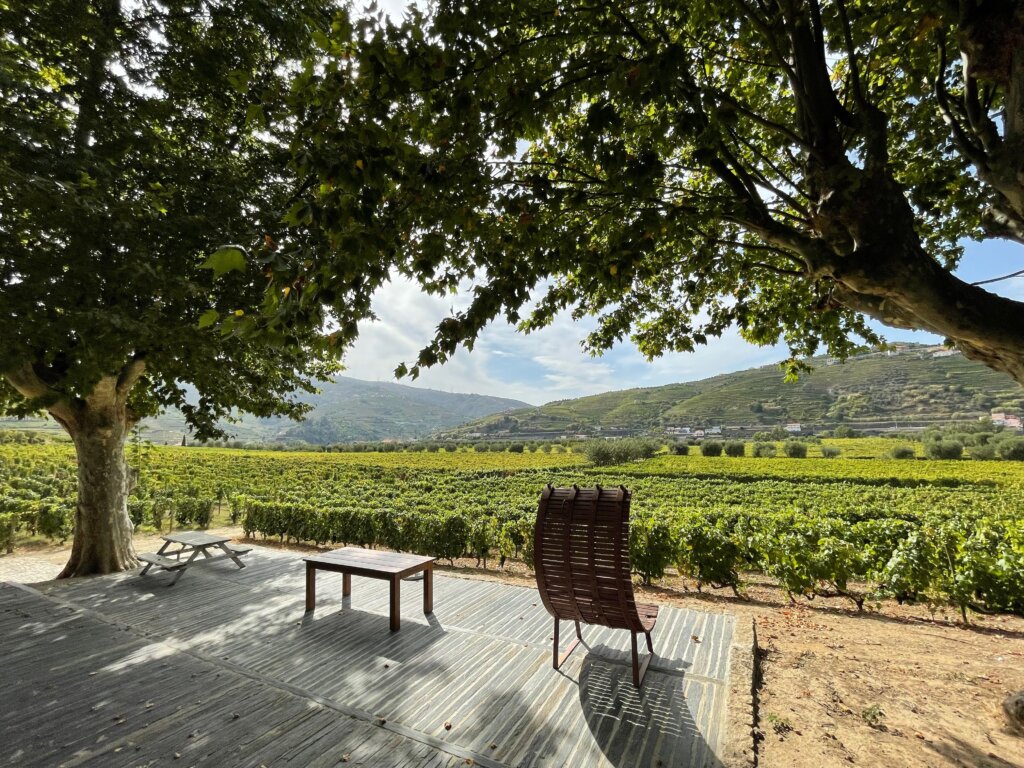
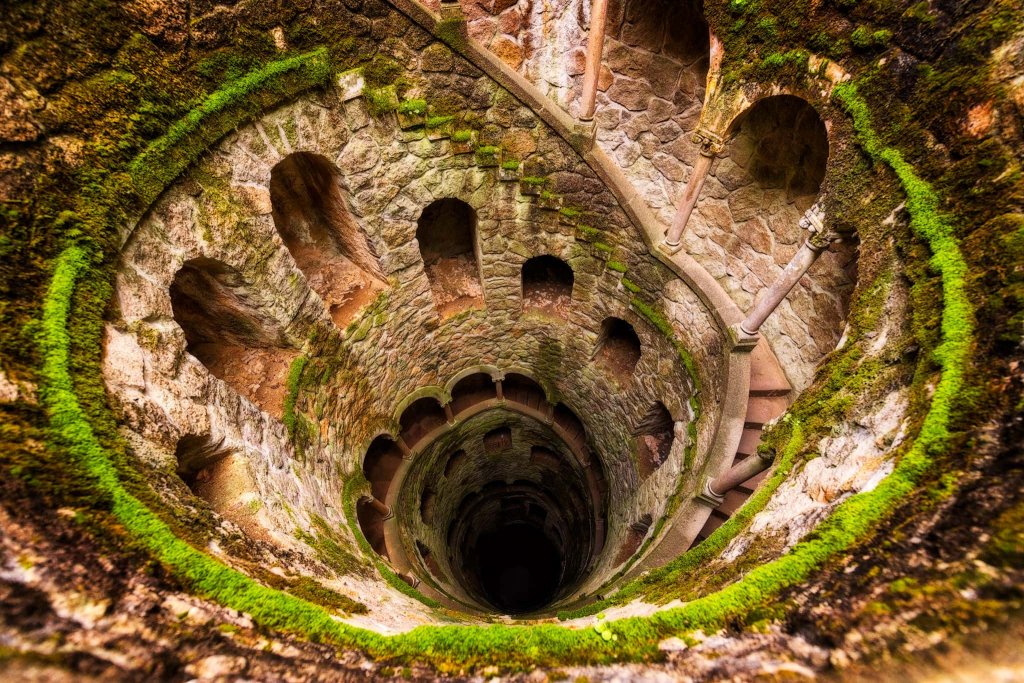
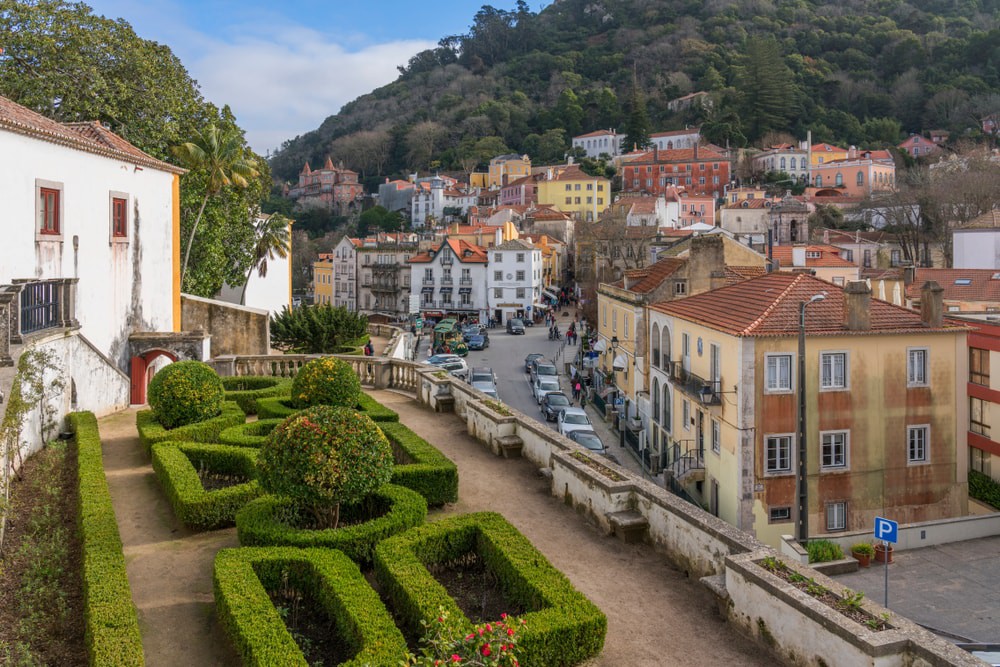
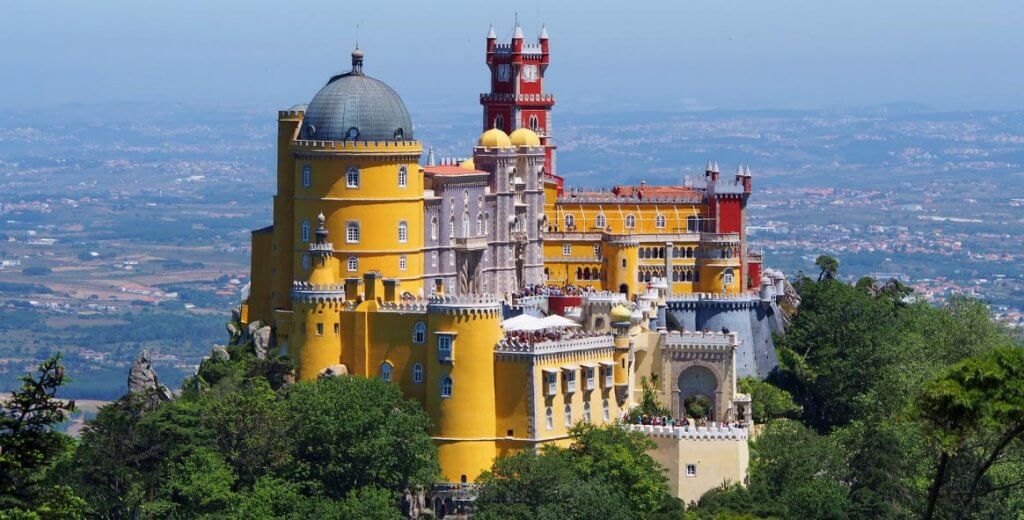

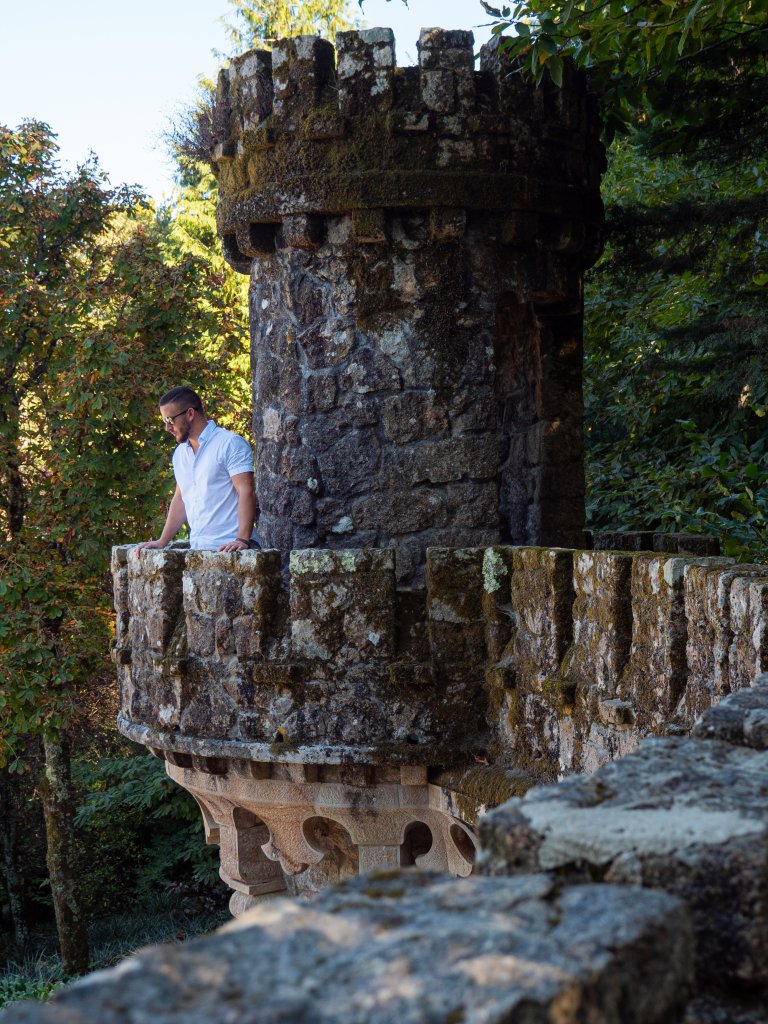
 Previous Post
Previous Post Next Post
Next Post

